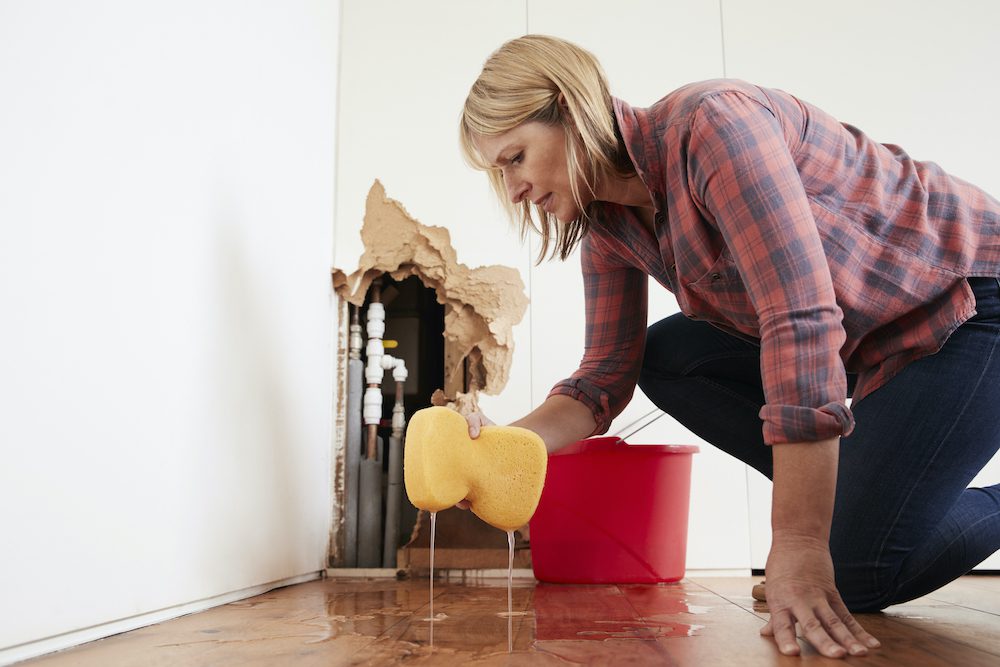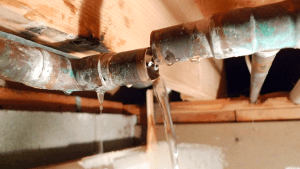Here in the next paragraph you can find a bunch of sensible information and facts pertaining to Locating water leaks.

Early detection of leaking water lines can minimize a potential catastrophe. Some tiny water leakages may not be noticeable.
1. Analyze the Water Meter
Every residence has a water meter. Checking it is a surefire way that aids you find leaks. For beginners, switch off all the water sources. Make sure no person will certainly purge, utilize the tap, shower, run the cleaning maker or dishwashing machine. From there, most likely to the meter as well as watch if it will certainly alter. Given that no person is utilizing it, there need to be no movements. If it relocates, that suggests a fast-moving leakage. Also, if you discover no changes, wait an hour or more and check back once more. This indicates you may have a slow-moving leak that can also be underground.
2. Inspect Water Consumption
If you identify unexpected modifications, despite your usage being the same, it suggests that you have leakages in your plumbing system. A sudden spike in your bill suggests a fast-moving leak.
A constant boost every month, also with the exact same habits, reveals you have a sluggish leakage that's likewise gradually escalating. Call a plumber to completely check your residential or commercial property, particularly if you really feel a warm area on your flooring with piping below.
3. Do a Food Coloring Test
When it comes to water intake, 30% originates from commodes. Test to see if they are running correctly. Decrease specks of food shade in the container and also wait 10 mins. If the color in some way infiltrates your bowl throughout that time without flushing, there's a leak between the storage tank as well as bowl.
4. Asses Exterior Lines
Do not forget to examine your exterior water lines too. Test faucets by attaching a yard hose. Ought to water seep out of the link, you have a loose rubber gasket. Change this and also make sure all links are tight. If you have actually obtained an automatic sprinkler, it will assist get it properly analyzed as well as kept annually. One tiny leakage can waste tons of water and surge your water expense.
5. Examine the circumstance and check
Homeowners need to make it a practice to examine under the sink counters as well as also inside cabinets for any bad odor or mold and mildew growth. These 2 warnings suggest a leakage so prompt focus is needed. Doing regular evaluations, even bi-annually, can save you from a major trouble.
Examine for stainings and also deteriorating as the majority of home appliances as well as pipelines have a life span. If you think dripping water lines in your plumbing system, do not wait for it to rise.
Early discovery of leaking water lines can reduce a prospective calamity. Some little water leaks may not be visible. Inspecting it is a guaranteed means that aids you discover leaks. One little leakage can throw away lots of water and also surge your water expense.
If you presume leaking water lines in your plumbing system, do not wait for it to rise.
How to Know If Your Home Has a Hidden Leak
Water Meter Reveals Inexplicable Water Usage
If you’d like to test whether or not there’s a leak somewhere in your home, you can do this using your water meter. Here is how to conduct the test:
Don’t use any water in your home for at least 30 minutes; this also means not turning on faucets or water-using appliances.
Go outside, and check your water meter for activity.
If your water meter shows that there was activity, even though no one was using any water, this proves that there is a leak in your home.Visible Mold or Mildew Growth
Leaks behind walls create moist, dark environments that allow mold and mildew to grow and thrive. Eventually, you might see mold growth forming on the wall closest to a hidden leak.
If mold is growing in an area that receives a high amount of moisture, such as a bathroom, it may simply be an indication that better ventilation is needed. However, if you see mold growth on a wall or the ceiling in an area where you would not expect, you probably have a hidden leak.
Musty, Mildew Odor
Sometimes you might not be able to see the mold or mildew that is growing as a result of a leak. However, the smell can give the problem away just as easily. If you catch a whiff of something musty, there’s a good chance that old water is collecting somewhere in your home that you can’t see.
Stained/Warped Walls, Ceilings, or Floors
When your home soaks up water, a variety of red flags can become visible, including ceiling stains, bubbling drywall, warped walls, and sagging floors. While these issues can be caused by excess humidity, they can also be signs that a pipe or plumbing connection has started leaking behind your walls.
Inexplicably High Water Bill
After a while, you get a general sense for what your water bill should be. If you own a pool or sprinkler system, your bill will tend to be higher during summer. However, if you receive a water bill that seems especially high, and you can’t figure out what caused it, then you may have a hidden leak somewhere that’s increasing your bill.
https://www.plumbingjoint.com/blog/2019/july/how-to-know-if-your-home-has-a-hidden-leak/

As a keen person who reads on Locating water leaks, I was thinking sharing that piece of writing was really helpful. Remember to set aside a second to promote this write-up if you appreciated it. I love reading our article about Finding hidden leaks.
Ready anytime, dial!